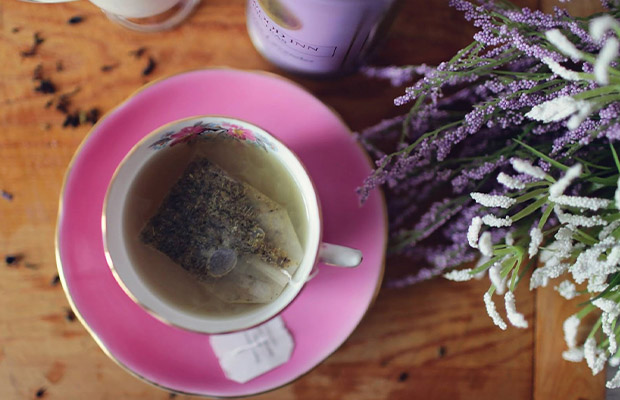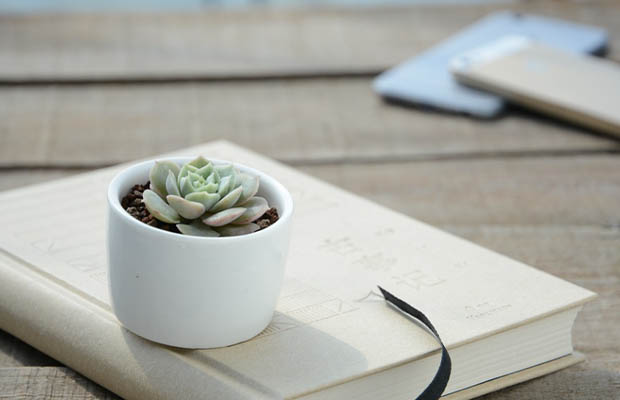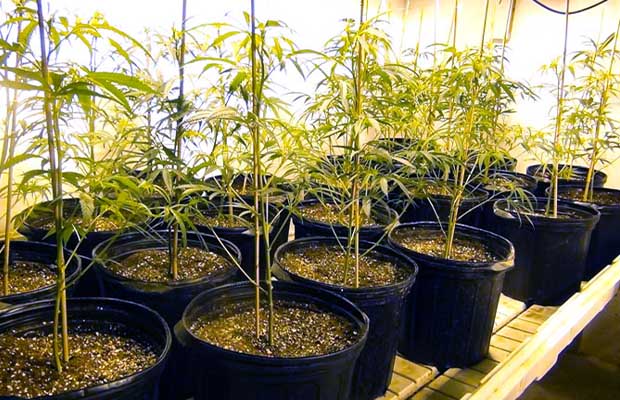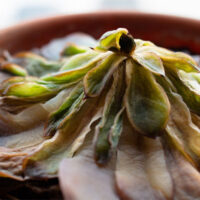Read on to learn what to do with lavender leaves if you’ve ever questioned whether you could put any use for those pretty grey-green leaves.
Lavender is a lovely herb that is aromatic woodsy, and sweet. It appears that your lavender plant’s leaves have a variety of wonderful uses! The lavender essential oil can be used to unwind, and lavender leaves can be used to entice pollinators.
Let’s explore the uses of lavender leaves in more detail.
Table of Contents
What Are Lavender Leaves?
The tiny purple buds of the lavender plant, which are typically what is used to make all the lavender-scented body products, room sprays, and of course, essential oil, are probably more familiar to you.
The plant’s flower is located there. Lavender uses photosynthesis in its leaves, just like other plants do. Even though your lavender plant may produce a lot of tiny buds, it will have many times more leaves than buds. The variety of things you can do with your lavender crop increases as you learn how to use them.
Go smell a few of those leaves. They smell strongly of lavender, which may surprise you as well. Lavender leaves have a strong aroma, which indicates that the same compounds found in lavender buds are also present.
The essential oil distilled from those flowers has been studied for its usefulness in aromatherapy, especially for promoting sleep, alleviating headaches, and reducing depression and anxiety.
Also Read:
How to Use Lavender Leaves? 12 Uses
You’ll find yourself with a lot of leaves if you have a few lavender plants growing. How should I dispose of all those lavender leaves? Here are some ways you can use them.
1. Put in Sachets
Enjoying the lovely scent of lavender leaves in a pillowcase or linen sachet is one simple way to use them.
To make homemade sachets, you can use fabric scraps or get these inexpensive muslin bags and fill them with dried lavender leaves.
Place one inside your pillowcase or by your bedside for sleep.
Place a number of sachets in your linen closet to give your linens a fragrant boost. When storing woolens off-season, you can use them to keep pests away from them.
2. Infused Vinegar
Fresh lavender leaves should fill a jar halfway to three-quarters of the way. Dried leaves are an alternative.
Fill the jar to the top with apple cider vinegar. Stir a couple of times to let air bubbles out.
Put a plastic lid on the container, or if using a metal lid, sandwich it between the jar and the lid with a few layers of wax paper or plastic wrap to prevent corrosion.
For at least three to four weeks, steep; then strain.
Use lavender leaf infused vinegar for:
- A hair rinse after shampooing (dilute up to 1/2 with water)
- Diluted to make an after-bath rinse for a dog, or spritzed on to repel fleas & ticks
- Mixed with an equal amount of water + pinch of cornstarch to make a glass & window cleaner
- Add 1/2 to 1 cup infused vinegar + 1/2 to 1 cup of Epsom salt for a detox bath
3. Use in Tea

Lavender makes a splendid addition to DIY herbal tea blends, and you can use the leaves as well as the flowers to make a lovely, soothing tea.
The combination of lavender, lemon balm, and chamomile is especially delicious, but lavender leaves can add a little special something to whatever tea you’re brewing, whether mulberry leaf tea, goldenrod tea, ginkgo biloba tea, or something else entirely.
4. Add to Desserts and Savory Dishes
Lavender leaves can take the place of rosemary in savory dishes. The same as with rosemary, use lavender sparingly. You can create your own dried herb mixture, which goes great with seasonal roasted vegetables and is akin to herbes de provence.
Additionally, many sweet dishes, particularly scones and ice cream, are flavord with lavender. Although you can finely grind the leaves for baking, you might get better results by infusing sugar with lavender as opposed to adding the leaves directly to your baked goods.
Making a simple syrup with lavender leaves is another option; it’s a favorite addition to lemonade and mixed drinks.
Get more doable suggestions for leading healthier, greener lives delivered right to your inbox!
5. Use in Homemade Bath Salts
Dried lavender leaves can be ground and added to DIY bath salts, on their own or with other herbs. A big bag of epsom salts is pretty cheap, so this use for lavender leaves is frugal as well as soothing. You can create an incredibly inexpensive homemade gift by packaging your lavender bath salts in eye-catching jars.
When using bath salts with whole herbs like lavender, it’s best to place them in a muslin bag or clean sock to prevent a mess after your relaxing soak!
6. Infuse Oil
Dried lavender leaves can be used to make homemade salves and lotions by fusing them with oil. To infuse oil, place dried leaves in jar and cover with a carrier oil like almond or olive oil and allow to infuse for 4 to 6 weeks.
Here’s more on infusing oils from the Herbal Academy. After the oil has been infused for the specified amount of time, strain the leaves out and store the oil in a sterile container.
7. Make Herbal Salts Or Sugars
It is possible to preserve dried leaves in salt or sugar. To make an herbal salt, combine 1 part lavender leaves with 4 parts coarse sea salt and blend till in a food processor, stopping before it becomes pasty. Alternatively, you could just mix salt and finely chopped leaves.
To get rid of more moisture before storing, spread the herb salt out on a baking sheet to dry for a day or two.
Consider infusing sugar instead of grinding it with the leaves because you might not want bits of lavender leaf in your baked goods. Infuse sugar and lavender in a 6:1 ratio for one to two weeks. Prior to using, sift the lavender.
8. Make Potpourri
In a pretty and fragrant potpourri, combine lavender’s calming scent with other garden herbs. Simply using the leaves is acceptable, but you can also include some buds.
9. Add to Homemade Soap
Have you ever tried making melt-and-pour soap? Incorporating herbs is simple and enjoyable. Pressed into a homemade soap, dried leaves would look stunning and smell amazing.
You can get bulk melt and pour soaps and use paper cups, muffin tins, or beautifully-shaped soap molds to make beautiful homemade soaps to give as gifts or enjoy for yourself.
10. Add to Homemade Candles
Consider pressing in some lavender leaves for color and scent if you enjoy making your own candles.
11. Lavender Air Freshener
Get rid of the frabreeze and candles and instead, mix 2 cups of water with 2 drops of lavender essential oil and keep this is a spray bottle for a natural, lavender air freshener.
I particularly enjoy using this on couches where dogs aren’t supposed to sleep but frequently do.
12. Uses for Lavender for First Aid
As I mentioned above, lavender can be used to treat a number of ailments, but having lavender essential oil, or a homemade lavender oil (made by heating up a carrier oil and lavender leaves and flowers) in your first aid kit is a good idea.
Use it to soothe sore muscles and joints, to heal bug bites or sunburns, to massage into your temples to relieve headaches, or to massage onto young children to aid in their nighttime sleep.
How to Dry Lavender Leaves?
It’s very simple to harvest and dry lavender leaves.
To harvest, cut off the plant’s top tips while the leaves are still green, avoiding the tougher, woodier section found further down the stem.
Anytime during the growing season, if you only need a few here and there for a project, you can cut them. The period right after the flowers bloom is ideal for gathering more lavender leaves.
After that, spread the leaves out on a fresh dish towel or piece of paper towel and let them air dry for a few days.
Once they are completely dry, keep them in a dark cabinet or a brown paper bag.
They are suitable for use as long as they have a distinguishable color and scent. Nevertheless, it’s time to compost your lavender leaves if you notice that their color or scent has faded.
Related Post: How to Dry Lavender?
Final Thoughts on What to Do With Lavender Leaves
Now that the query of what to do with lavender leaves has been addressed. Be imaginative, please!
Lip balms, bath bombs, lotions, creams, and soap can all be made with the infused oil. Alternatively, consider using the dried leaves in recipes for bath teas or house cleaning.
Play around with our recommendations or get motivated to try some of your own!
Read More:
FAQs
How to Use Lavender Leaves for Sleep?
Use dried lavender flowers (Mountain Rose Herbs always has quality options) in a sachet and place underneath your bed linens to create a soft, calming scent that dissipates as you sleep on top of it to maximize lavender’s sleep-inducing properties.
What Are Lavender Leaves Good For?
Both medicinal and culinary uses are possible for lavender leaves. In medicine, it has been used for calming, anxiety reduction, mood enhancement, antiseptic and anti-inflammatory properties.
Can You Eat Lavender Leaves?
Yes, lavender is frequently added to lemonades, baked goods, simple syrups, and more.
Can You Use Lavender Leaves for Sachets?
Yes, a pillow or linen sachet infused with lavender leaves’ lovely scent is a simple way to use them. Inexpensive muslin bags can be purchased and filled with dried lavender leaves to create homemade sachets. You can also use fabric scraps for this purpose.

















